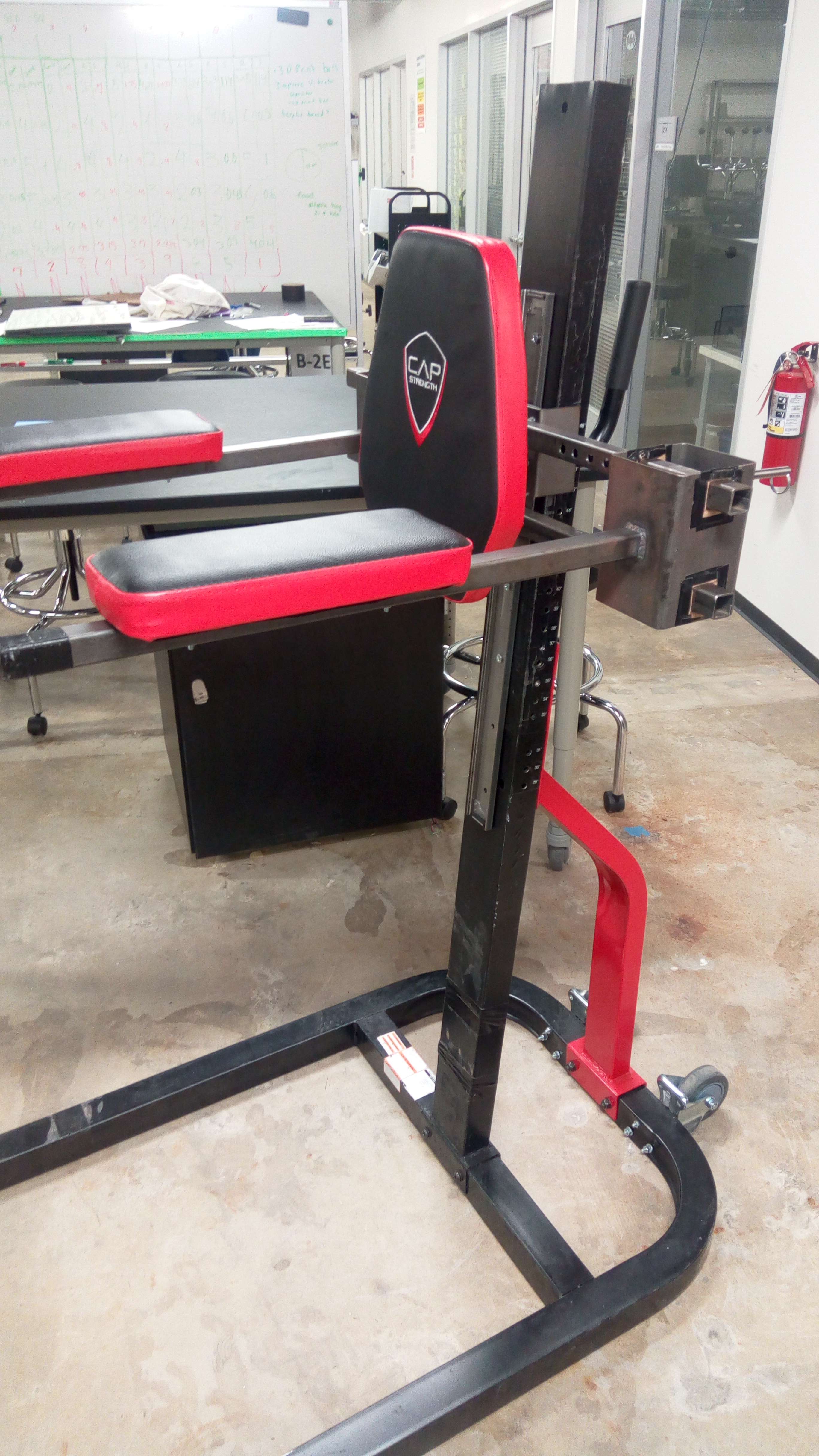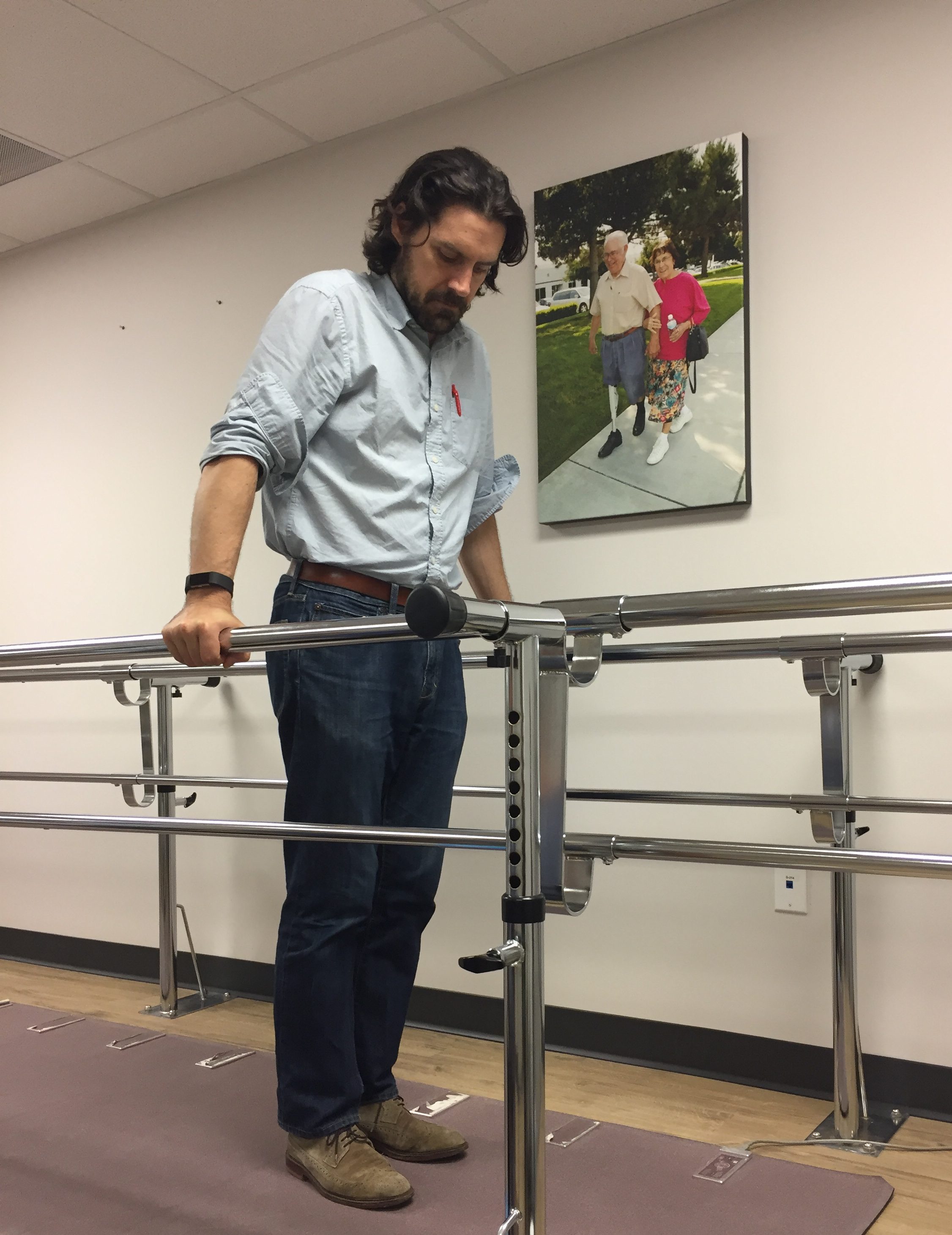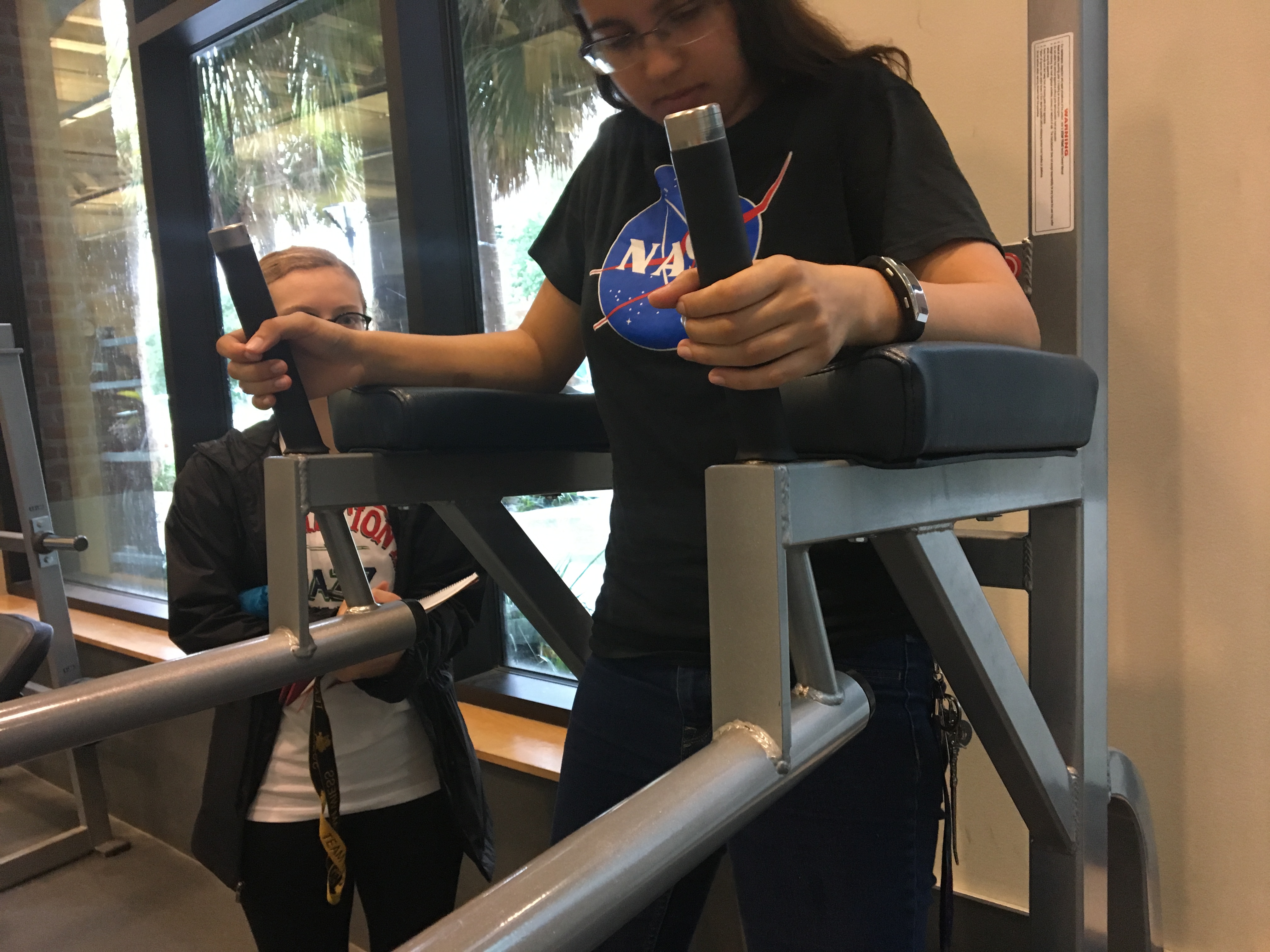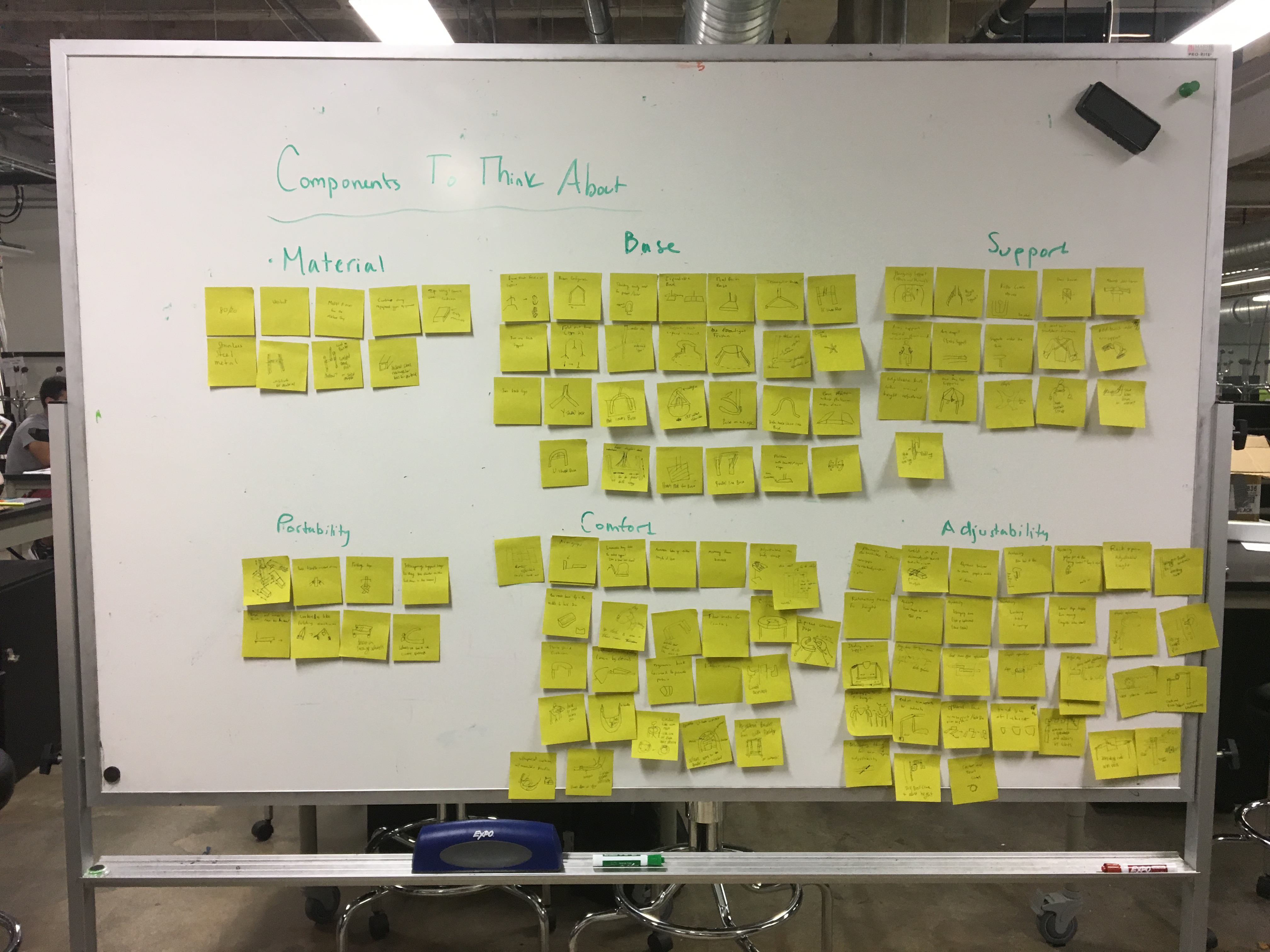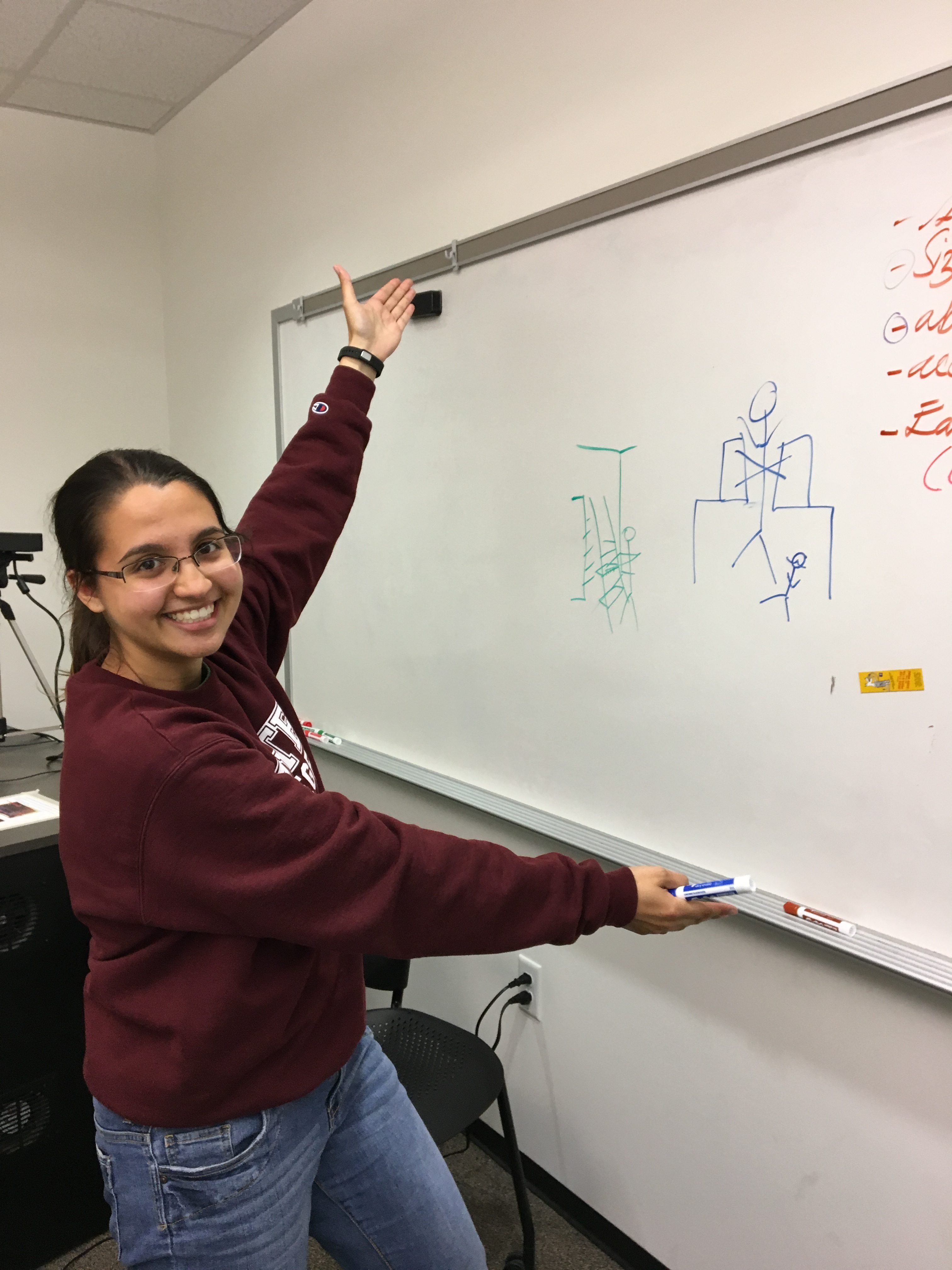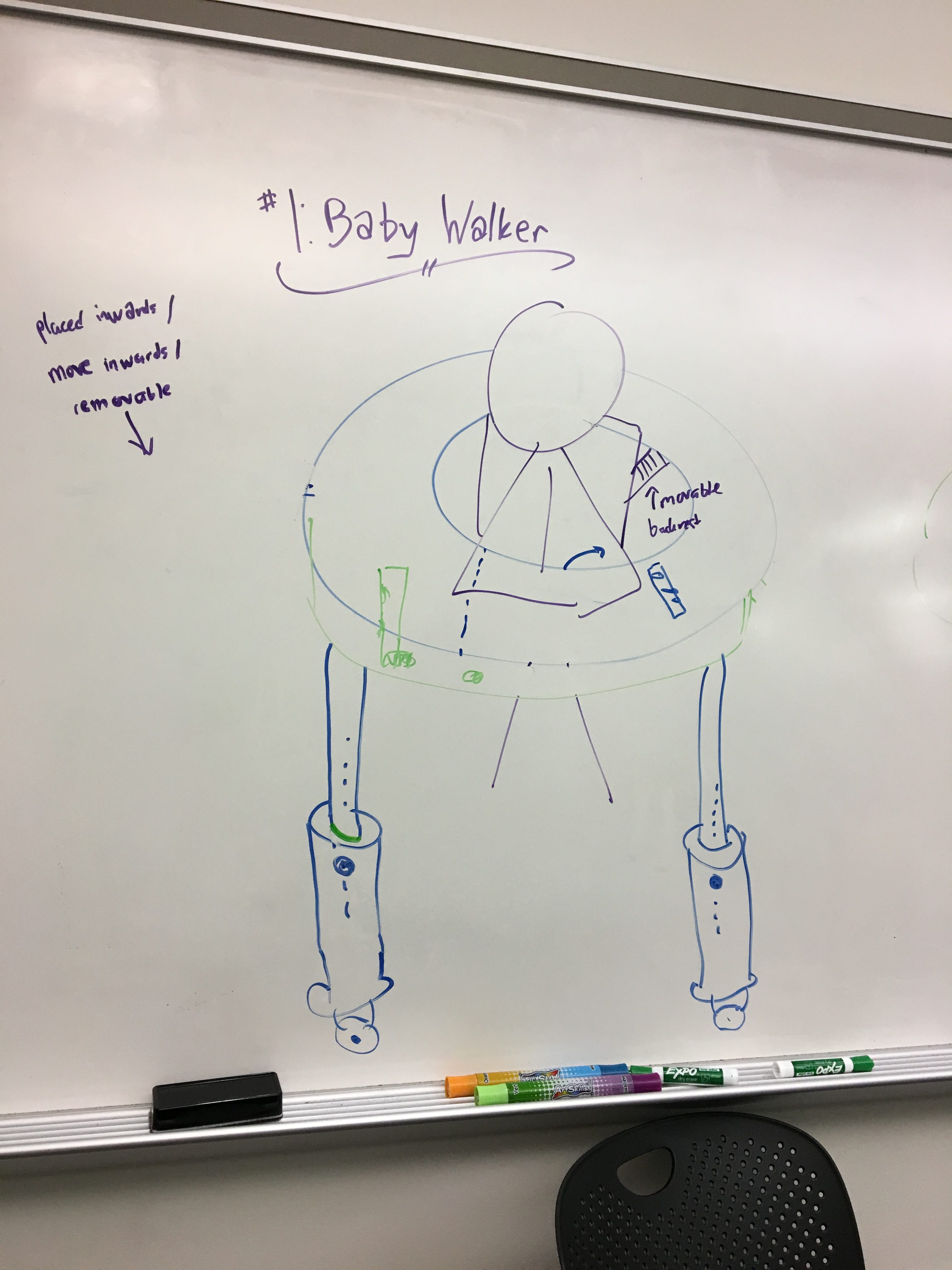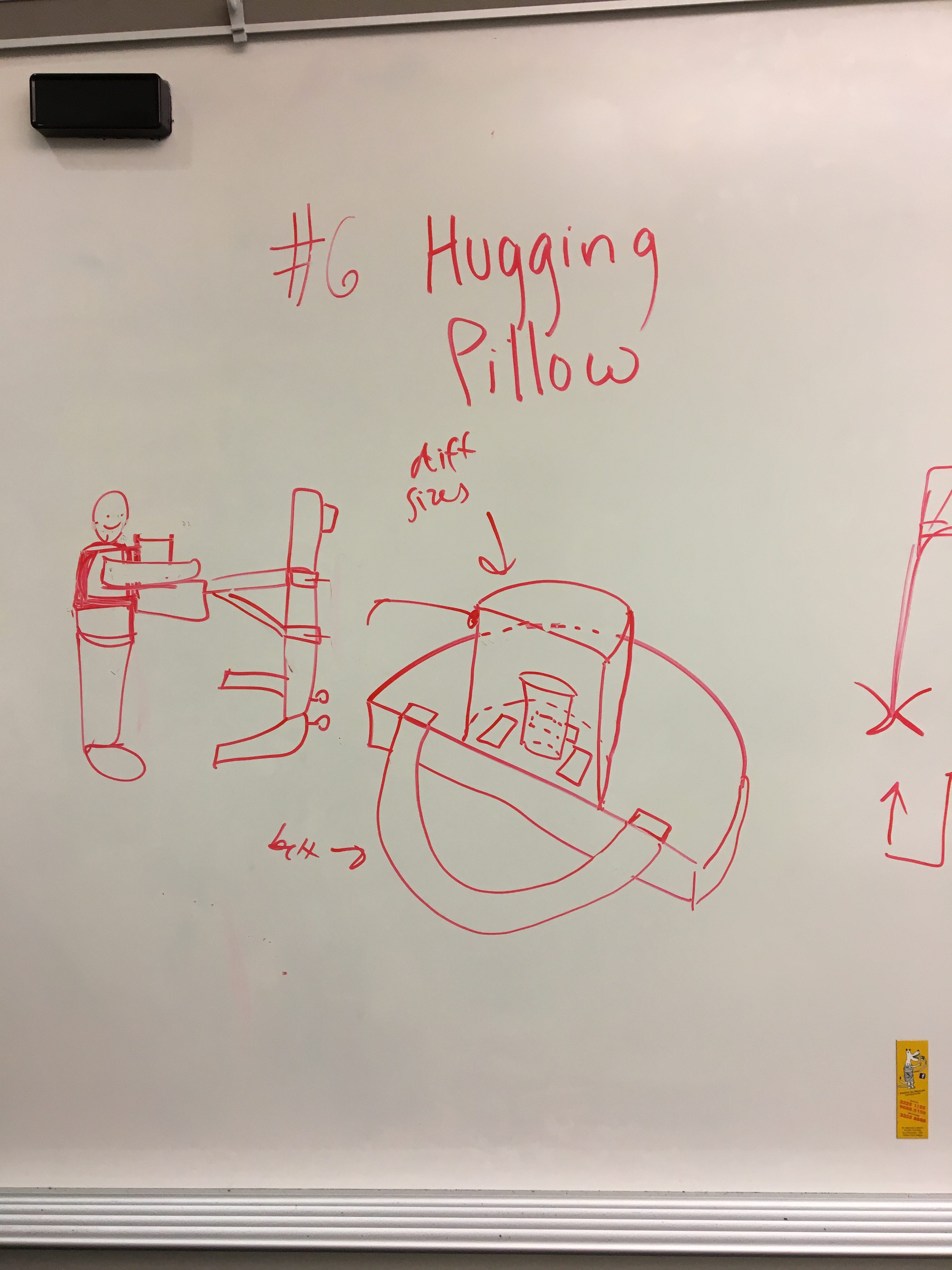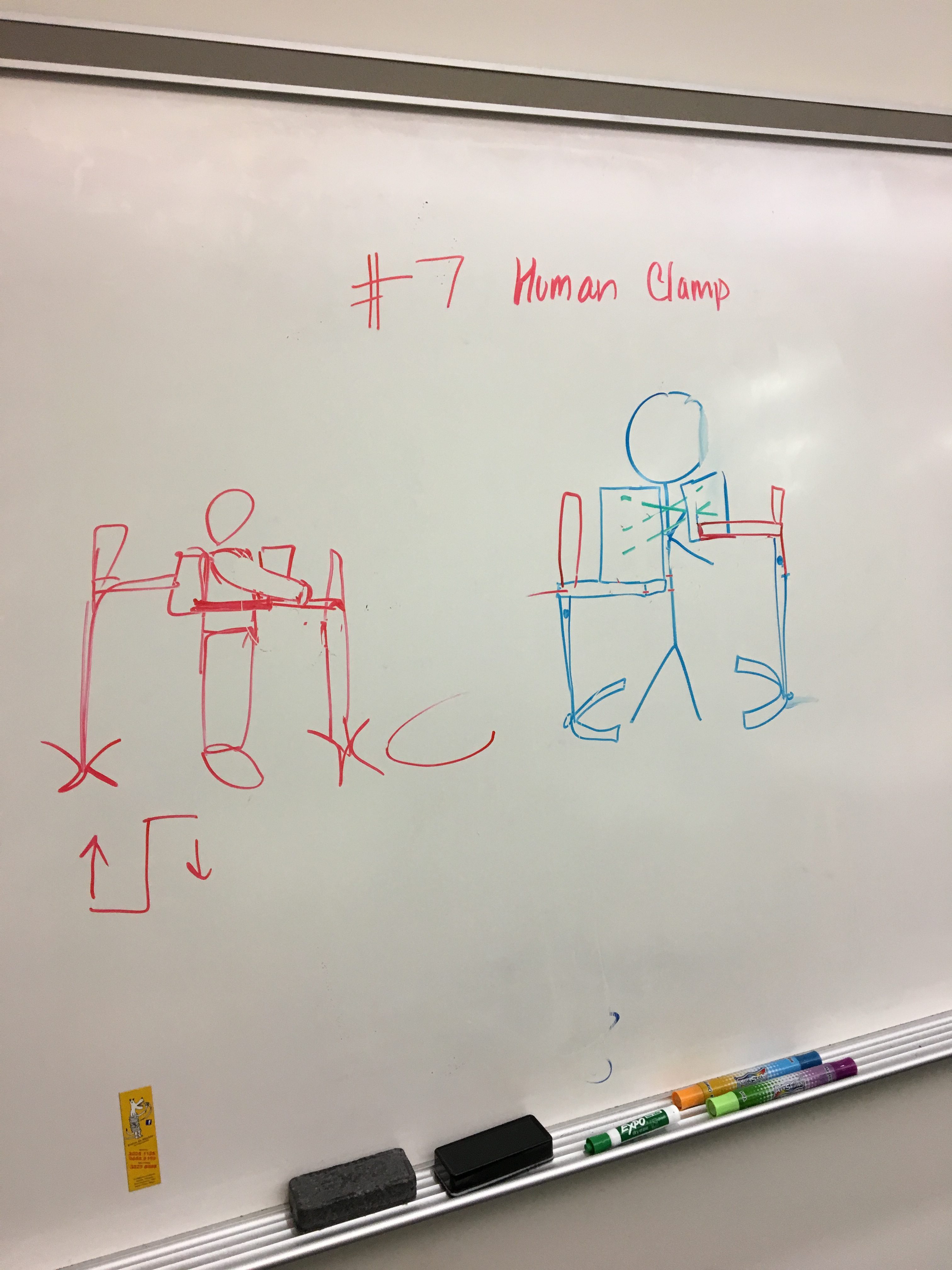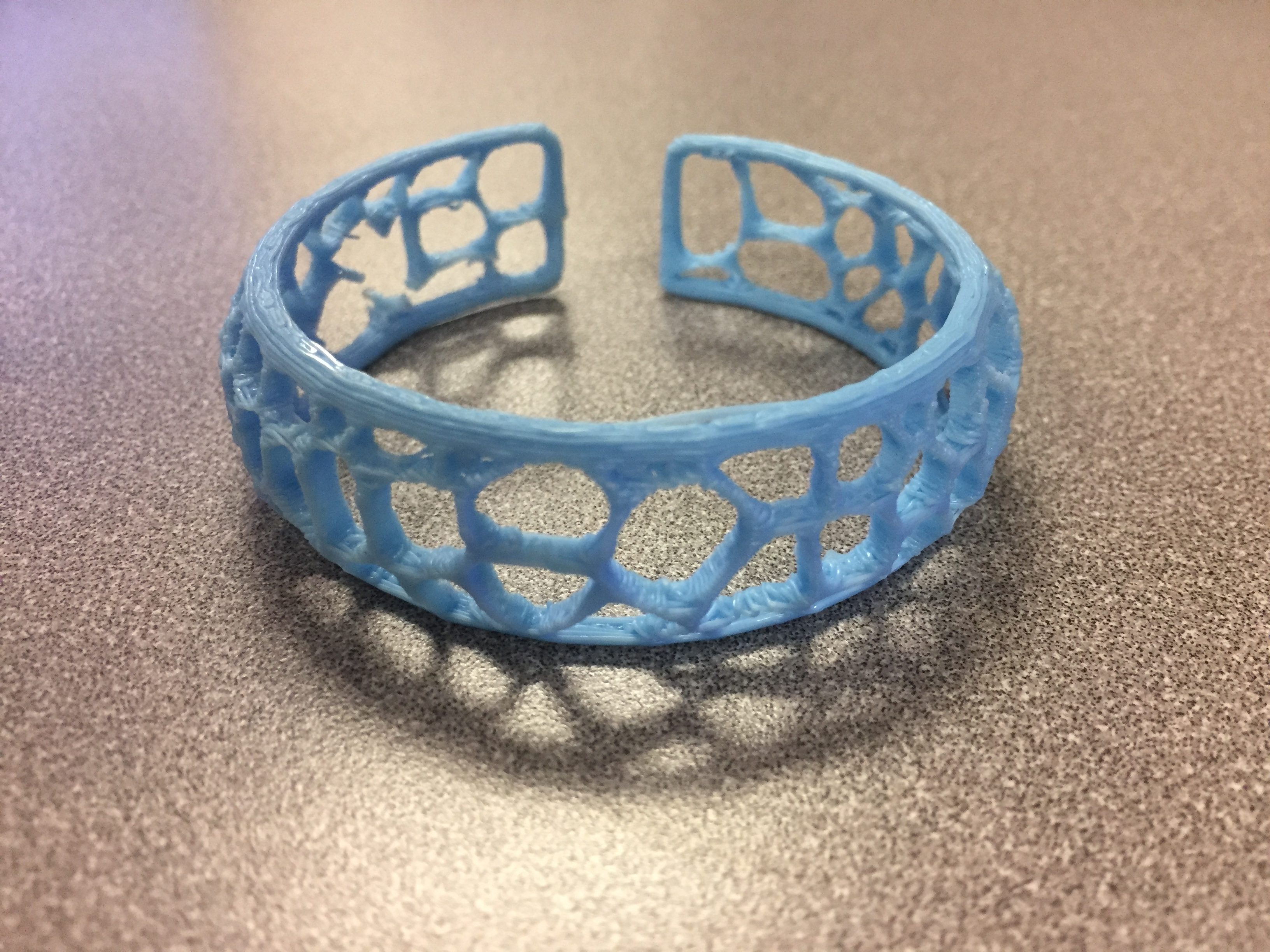My team has spent no less than two days locked in the downstairs OEDK conference room deciding what to build. And we aren’t much closer to where we started.
So that’s how this week has gone.
I briefly mentioned this last week, but now that Boot Camp is over, we have officially shifted into our main projects for the rest of the summer. If okapi enrichment was the little leagues, prosthetic casting stands are the major league (If that analogy was horrible, I’m going to excuse myself by saying that baseball isn’t really my thing…) I am working with Alex, Liz, and Blessings on Team Gotta Cast ‘Em All (get it? Cast?) to improve a casting stand for patients to lean on while a prosthetist is taking a cast for their new leg. Currently, our client makes them support themselves on parallel bars while they are being cast, but it is really difficult for someone who hasn’t stood in six weeks (because they are literally missing a leg) to support themselves on parallel bars.
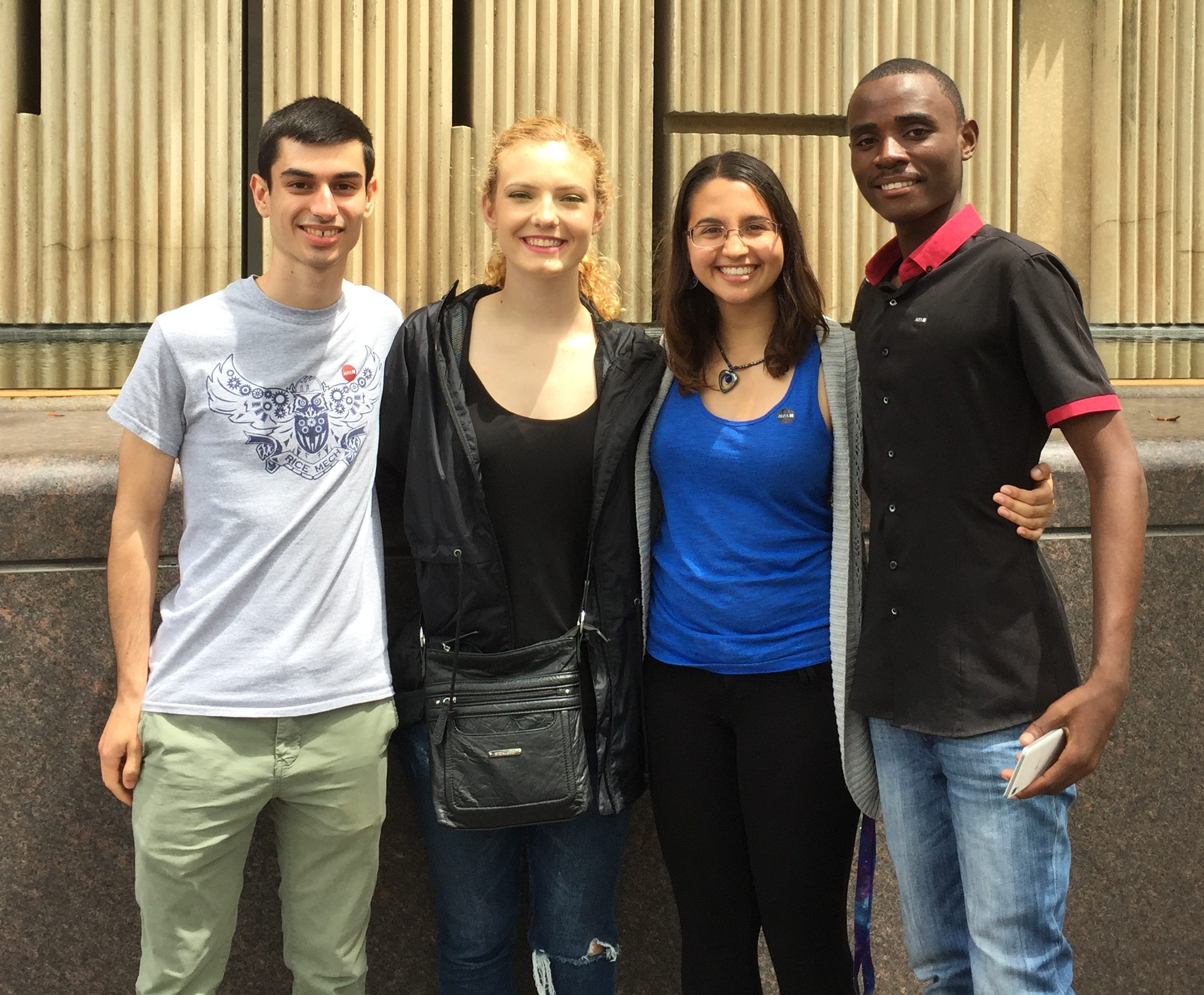
Team Gotta Cast ‘Em All: Alex (the brains of the operation), Liz (the grey matter of the operation), me (the little grey cells of the operation), and Blessings (also the brains of the operation)
So, a previous team built a stand for people to use, and although it is functional, it is not the best solution for the problem, nor is it the most sturdy. So that’s where we come in. Alex, Liz, Blessings, and I have come together to fix this prototype to create the best prosthetic casting stand the world has ever seen. Although we are taking the previous casting stand for inspiration, we are essentially planning to throw their design out the window and start over.
This led to us starting the engineering design process over completely. So on Friday, Dr. Wettergreen took us to actually visit our client at Hanger Clinic and ask him all of the questions that could possibly be relevant in constructing our device. We learned so much about what is necessary to create a proper cast, what our client wants in our device, and about prosthetics in general. Andre Martinez showed us around the facility, letting us see both the various sizes of rooms in the facility and the back lab where he actually makes the prosthetic limbs themselves. We saw sample casts as well as completed legs ready to go to their owners. As someone interested in prosthetics, the entire visit was super cool and educational, and I really hope that schedules align so we can go back and visit to actually see the casting process take place.
After learning about the problem from our client, we came back to the OEDK to continue researching problems and potential solutions. We looked up information about everything from ergonomic back rests, fastening devices on gym equipment, patents, and how to weld. And then after I watched a five-minute video about gathering the supplies for MIG welding, I learned that I likely wasn’t even going to be able to weld this summer. That was a tragedy, but I still hold out hope.
We had now researched anything and everything that could possibly relate to our project. So it was time to move on to Brainstorming. We all spent 30 minutes with a pad of sticky notes, coming up with different ides for modifying the current prototype, with everything from adding handles and armstraps to making an H-shaped base for the device. And then we struggled to put all of our ideas for different components together into different solutions, both because there were so many… and because they were all the same.
In the end, all of our ideas were merely variations on a single theme in which there was arm and back support resting on one back support. We should have realized this when it was so difficult to screen and determine the differences between the solutions, but didn’t actually realize until Dr. Wettergreen found us and told us the meaning of “Design Fixation”… which is defined just like it sounds and very obviously applied to us.
So we brainstormed again, this time out loud and in a separate room so we were not influenced by the already existing prototype. And this is when we came up with a lot more off-the-wall ideas for our prototype, like modeling it off of playground equipment, skis, etc. Let’s just say that any brainstorming session in which the medieval torture devices are googled is a good brainstorming session.
Once we finished brainstorming new ideas, we had to screen through them. A lot of terrible ideas were discarded, several terrible ideas made it through, and a couple of seemingly terrible ideas turned out to not be so terrible after all. A few notable designs include the Baby Walker, the Huggable Pillow, and the Human Clamp.
Screening these was the easy part, but the challenge really arose when we tried to score the solutions. When scoring, it is important to measure each design against objective and quantitative scales, but these scales are often difficult to come up with for criteria such as “Patient Comfort.” After staring at the whiteboard for hours and making minimal progress, we finally decided to use our current prototype to low-fidelity test some of our ideas and rate their comfort on a numerical scale. We are still working through this step, but hopefully by using actual test data, we can soon decide on a final design with which to move forward.
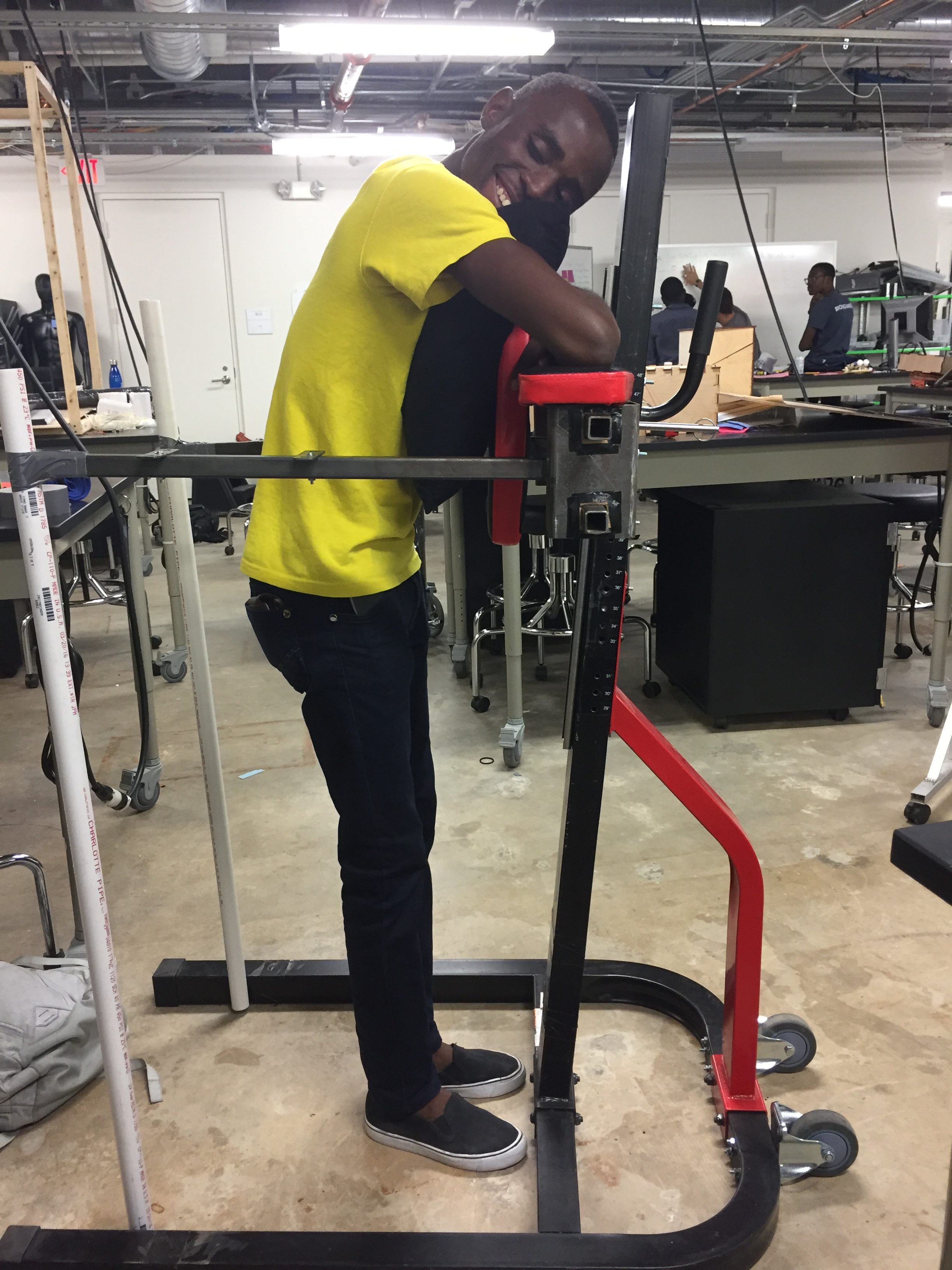 |
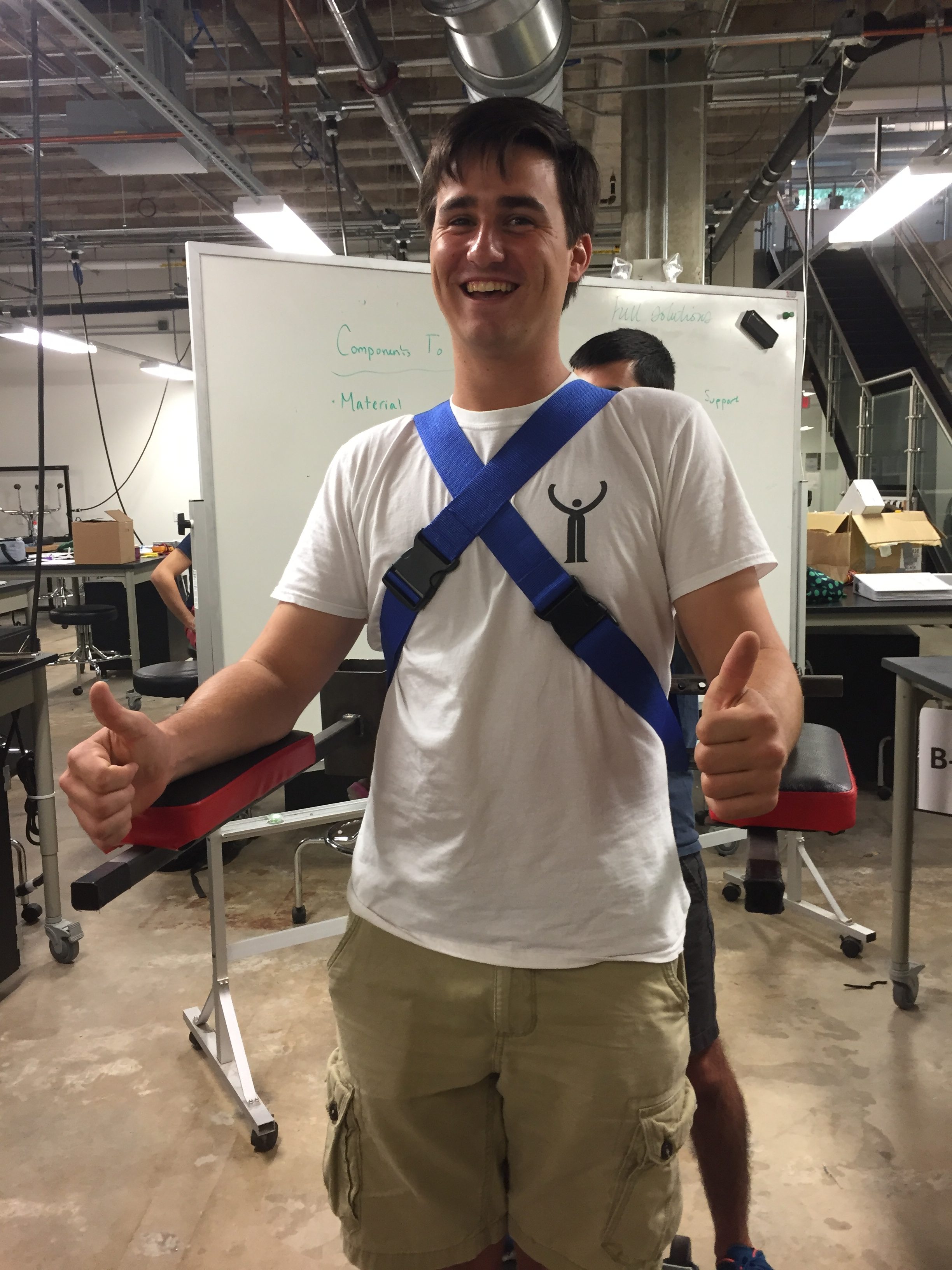 |
 |
| Blessings really enjoying the Huggable Pillow | Ashton being a good sport about testing our modified current design | Blessings and Liz modeling the Human Clamp |
In other news, Jeremy taught us SolidWorks and how to 3D print this week. I’m not saying I am even close to being any good, but I am considerably more confident in my abilities with the program now, and I at least now know how to make a box in SolidWorks, so that’s an improvement over where I was at the beginning of the week. Everyone has also subsequently caught the 3D printing bug, so people are now printing really cool things, from gyroscopes to bike stands to shark-shaped chip clips. I personally printed a coral bracelet and then spent the entire next day picking the support off of it. This summer, I hope to dabble with 3D printing and SolidWorks even more so I can print my own creations. Dr. Wettergreen challenged us to print items that are “bigger on the inside,” which probably doesn’t specifically refer to the TARDIS from Doctor Who, but I’m going to try to design one anyway. As he said this morning, “The OEDK is my playground,” and while I’m here, I do plan to play.

